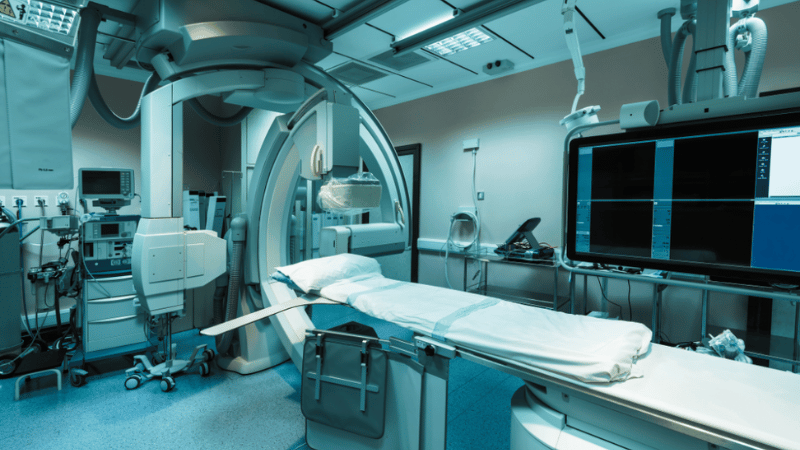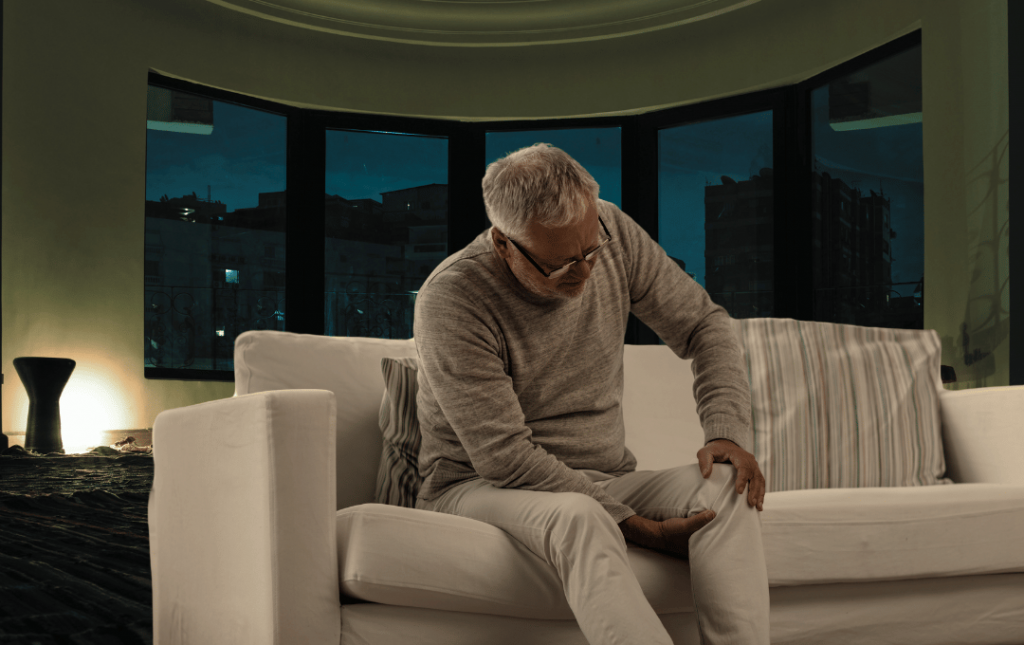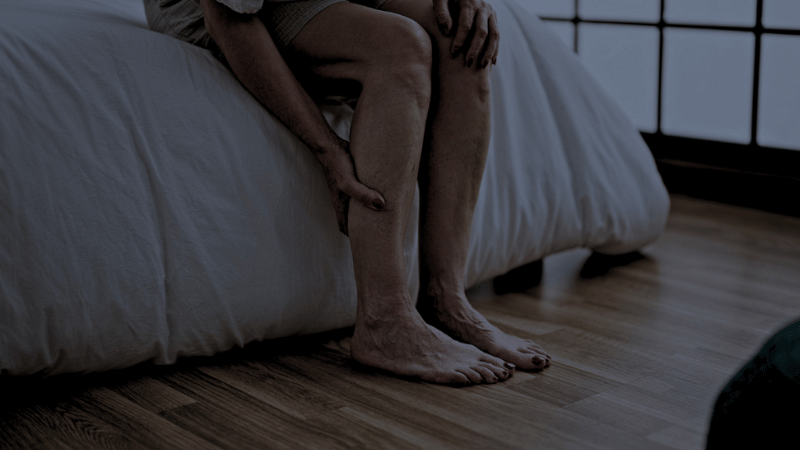Many individuals experience moderate pain in their lower extremities while lying down or sleeping. While this type of pain may disrupt sleep patterns here and there, it’s typically harmless. However, in some cases, leg pain at night can be an early warning sign of poor circulation or a serious vascular condition like peripheral artery disease (PAD).
We’ll explore some of the common causes of night-time leg pain and when it may be time to consult a medical provider.
What Does Night-Time Leg Pain Feel Like?
Night-time leg pain can vary from person to person. Some individuals experience cramping or a throbbing sensation in their calves or feet. This pain typically occurs after a prolonged period of lying or sitting. Others may experience severe to moderate leg pain at night that improves when they stand or walk. Regardless of the type or severity of pain, leg pain can interfere with sleep and contribute to poor quality of rest.
Common Causes of Leg Pain at Night
There are many reasons why your legs may hurt at night. Some common reasons are more severe than others and may require medical intervention. Understanding the causes and associated risks can help identify the source of the symptoms and the appropriate treatment.
Some of the potential causes of leg pain at night include:
- Muscle fatigue or overuse: Overexerting your energy or straining your muscles after a workout can cause muscle fatigue and discomfort at night.
- Restless leg syndrome (RLS): RLS is typically caused by pregnancy, diabetes, and iron deficiency. Patients with RLS experience a sudden urge to move, particularly at rest.
- Nerve compression or neuropathy: A pinched nerve or nerve damage can cause a sharp, burning pain in the legs and feet.
- Medication side effects: Certain medications can cause leg cramps or a tingling sensation in the legs. These side effects typically occur at rest or while sleeping.
- Dehydration or mineral imbalances: Dehydration or mineral imbalances can cause cramping or muscle spasms in the legs.
- Poor sleep posture: Poor sleep posture can put extra stress on joints and nerves, leading to pain and discomfort during the night.
- Poor circulation: Poor circulation in the lower extremities can cause aching, cramping, and tingling in the legs and feet.
When Leg Pain at Night Could Signal Circulatory Issues
Leg pain at night, often caused by poor circulation, is typically a sign of an underlying vascular condition. Vascular conditions can restrict blood flow, making it harder for blood, oxygen, and nutrients to reach the tissues in your lower extremities.
Poor circulation-related leg pain may be accompanied by skin discoloration, cold sensations, non-healing sores, or symptoms that worsen during rest. If the pain is persistent, seek a diagnosis to determine if an underlying vascular issue may be the cause.
Circulatory Conditions That May Cause Leg Pain at Night
Many different vascular conditions may be causing your leg pain at night. Most vascular conditions require medical intervention or medication to prevent the disease from progressing. Some common conditions include:
- Chronic venous insufficiency (CVI): Weak valves cause the blood to pool in the legs, causing the legs to ache, throb, and swell at night.
- Deep vein thrombosis (DVT): Blood clots form in the deep veins, causing the skin to feel warm. You may also experience swelling, cramping, or throbbing pain in the affected leg.
- Lymphedema: A buildup of lymph fluid causes blockages in the arms and legs, resulting in the legs feeling heavy or tight. Individuals may also notice a limited range of motion and skin discoloration.
- Peripheral artery disease (PAD): PAD is a key cause of leg pain at night. It’s a progressive disease that requires medical intervention to lessen the severity of symptoms.
How Peripheral Artery Disease (PAD) Causes Night-Time Leg Pain
Peripheral artery disease (PAD) is a vascular disorder characterized by the accumulation of plaque in the arteries. When plaque builds up, it restricts blood flow and circulation. This can cause chronic pain, cramps, and numbness in the legs or feet.
Patients with PAD can experience different kinds of leg pain at night, such as:
- Leg cramps during physical activities like walking
- Throbbing leg pain at night in the lower legs or feet
- Discomfort that worsens when elevating your legs, such as when lying in bed
- Pain in the legs or feet that disturbs sleep
Take our risk assessment quiz to see if your symptoms could be related to peripheral artery disease (PAD).
PAD Symptoms vs. General Poor Circulation
While peripheral artery disease (PAD) and general circulation issues can present with similar symptoms, there are key differences in severity and impact.
PAD involves the accumulation of plaque in the arteries, restricting the flow of blood, oxygen, and nutrients to the lower extremities. This causes cramping and throbbing leg pain.
Peripheral artery disease can also cause claudication, a condition characterized by leg pain that develops during physical activity and improves with rest. PAD symptoms can also include coldness in one leg, non-healing wounds, or leg pain even when resting, signs not typically seen with mild circulation issues.
On the other hand, general circulation problems may cause generalized discomfort, such as tingling, numbness, or occasional cold sensations in both the hands and feet. These symptoms are often less intense and may not consistently interfere with daily activities.
Because symptoms can overlap, regular vascular screenings are recommended to help differentiate between mild circulatory problems and more serious conditions like PAD. Early diagnosis is crucial for preventing progression and reducing the risk of complications.
Call Now to Schedule A Consultation
How Doctors Diagnose and Treat Night-Time Leg Pain
Treatment for leg pain at night will vary depending on your diagnosis. During a consultation, your medical provider will conduct a thorough examination to determine if your leg pain is caused by muscle fatigue, poor circulation, or nerve issues. From there, they will develop a personalized treatment plan tailored to your condition and may offer lifestyle recommendations or prescribe medications.
Vascular Screenings for Peripheral Artery Disease (PAD)

A vascular specialist will use a combination of physical examinations, specialized tests, and medical imaging to determine whether the pain in your legs is caused by peripheral artery disease (PAD).
Some diagnostic testing devices used by USA Vascular Center specialists include:
- Ankle-brachial index test: This test compares the blood pressure in your arm and ankle to assess whether PAD is restricting blood flow to your legs and causing leg pain at night.
- Ultrasound: Sound waves create images of arteries, detect blood flow, and blockages.
- Angiography: A thin tube (catheter) is inserted into your blood vessels, and a special dye is injected through it. This dye shows up on X-rays, enabling doctors to identify blockages.
- Blood tests: Help determine PAD risk factors, such as high cholesterol or diabetes.
PAD Treatment for Leg Pain at Night
If you’re diagnosed with PAD, a vascular specialist may recommend one of the following treatments:
- Angioplasty: A catheter with a deflated balloon is inserted into the artery. The balloon compresses the plaque against the artery wall, restoring blood flow. Once the balloon is deflated and removed, a stent may be placed inside the artery to keep it propped open.
- Stent placement: A stent is a small, mesh tube designed to keep the affected artery propped open, helping to restore blood flow and prevent future blockages. A stent placement can be paired with an angioplasty or atherectomy. There are also specialized stents that are medication-coated, providing long-term relief.
- Atherectomy: A specialized catheter with a tiny laser or blade is inserted into the groin or thigh. It’s used to physically remove plaque from the affected artery to help clear the blockage. This treatment carries a lower risk of infection and can be paired with stent placement.
If you have questions regarding treatment for PAD, speak with USA Vascular Centers’ highly skilled vascular specialists.
Treat Leg Pain at Night with USA Vascular Centers
USA Vascular Centers offers non-surgical, outpatient treatment options that can help reduce pain and restore blood flow. We specialize in custom treatment plans and accept most insurances, including Medicare and Medicaid, at our nationwide locations.
Schedule your appointment online or call 888.773.2193 to speak to a member of our team.
FAQs About Leg Pain at Night
Why do my legs hurt more when I lie down?
Leg pain while lying down may be caused by poor circulation, muscle cramps, peripheral artery disease (PAD), or restless legs syndrome (RLS). Schedule a consultation with your healthcare provider if the pain persists or is severe.
Do sleep positions affect leg pain at night?
Sleep positions can affect leg pain at night—lying on your stomach or in a tight fetal position may worsen discomfort, while sleeping on your side may help relieve it.
How can I determine if my leg pain at night is caused by poor circulation?
Leg pain at night may be caused by poor circulation, as it often improves when you dangle your feet off the bed or stand up. This is often a sign of peripheral artery disease (PAD), where gravity helps restore blood flow to the legs, temporarily relieving the pain caused by reduced circulation.
Can PAD cause leg pain during the day as well?
The second stage of PAD is claudication, which typically causes pain or cramping in the legs during physical activity and improves with rest. As PAD progresses, it can lead to ischemic rest pain, a more advanced stage marked by severe pain in the legs or feet—even when at rest—due to critically reduced blood flow to the lower extremities.


